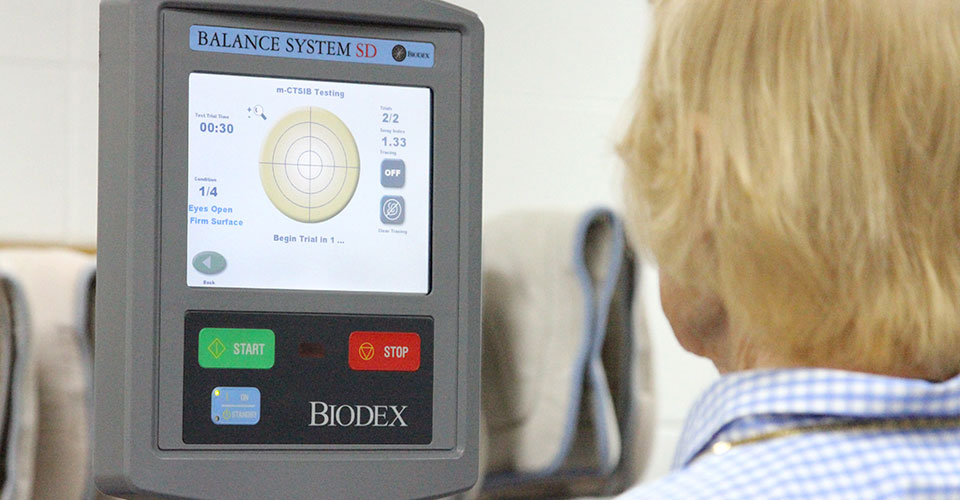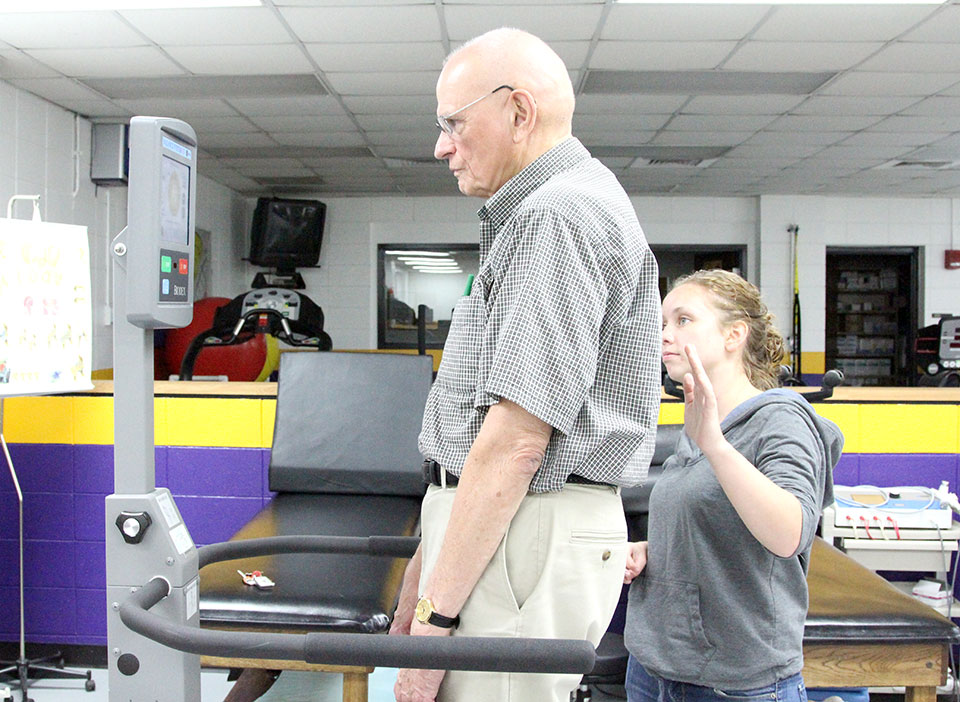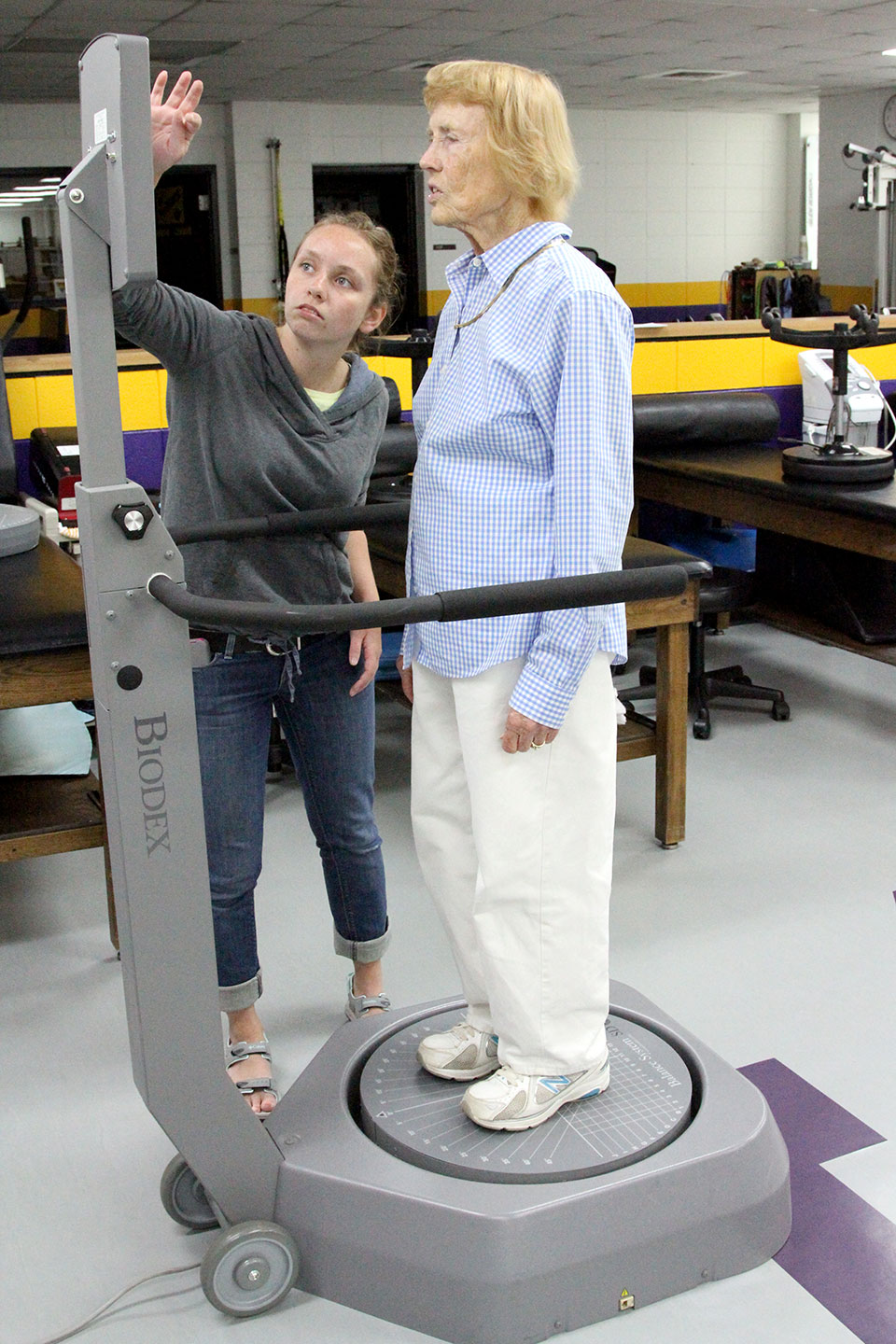


By Ashley Remington ’15
In the United States, roughly 300,000 athletes suffer from concussions every year, and determining when they can to safely return to normal activity can be challenging to measure. After receiving a $61,466 grant from the UW System Lab Modernization Program, students in the University of Wisconsin-Stevens Point Athletic Training Education Program (ATEP) now have the opportunity to utilize advanced technology that helps to quantify recovery results, improve post-concussion safety measures, and minimize injuries.
One of the new tools in the athletic training lab is the Biodex Balance System SD. The Biodex machine tests three systems—cognition, neural abilities and the vestibular system—making it extremely important for student-athletes in the area of concussion management. It is used on campus to test all student-athletes to deliver a post-objective preseason baseline, and in the event of an injury, student-athletes can be retested to provide a post-injury balance assessment and help determine whether and when the vestibular system is ready to return to play.

“It’s an important tool to have because it gives you hard numbers and more concise data,” said student-athletic trainer Rachel Popelka ’15. An estimated 47 percent of athletes do not report feeling any symptoms after a concussion blow. “Without it, we are only guessing at how patients are improving. With it, it is no longer a judgment call in determining when to send an athlete back after a concussion or injury.”
In addition to concussion management, the Biodex Balance System helps with improving balance, increasing agility, developing muscle tone and treating a variety of pathologies, enabling student-athletic trainers to learn about these areas by experience. “Multifaceted,” is how Professor Holly Schmies, Ph.D., director of ATEP, describes the Biodex Balance System SD. “It can be used for treatment, rehab and education.”
Popelka assisted Rory Suomi, Ph. D., professor of physical education, in conducting a study on the relationship between balance in older adults and their perceived risk of falling using the Biodex Balance System, demonstrating how the benefits of the machine extend beyond the student population. Especially beneficial to the elderly for fall risk screening and conditioning, the machine has been used by community members and former faculty. Melba Sullivan and former ROTC professor Jack Porter are just two examples of those who have utilized the new tool to receive exercise suggestions based on their results.
“One of the really important features is the willingness of the college faculty and students to lend their expertise to other students, faculty and especially community members,” described Sullivan.
Schmies emphasized the incredible growth of technology that has emerged, and noted that the Biodex System is not the only advancement of technology within the athletic training program. For example, use of iPads is expanding to help conveniently ensure the safety of student-athletes. With apps such as SCAT (standardized concussion assessment tool) and the King-Devick test, iPads will be taken to athletic practices and used on the sidelines as convenient safety measures.
Machines like the Biodex Balance System SD and other technologies are used routinely in professional sports. “For students to be a part of that is huge,” said Schmies, “It is amazing for student athletic trainers to see, use and learn about a treatment/rehab tool that will readily be a part of their future careers.”
